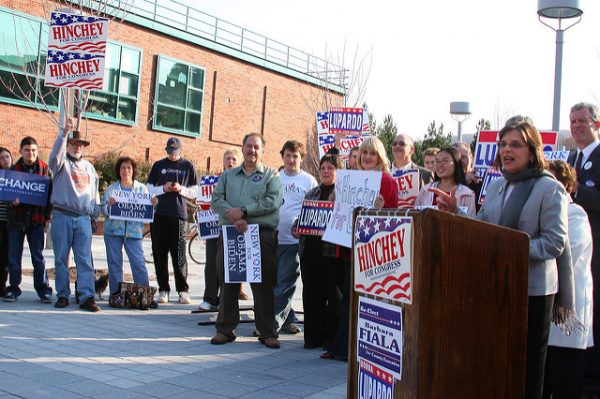
Everyone is worried about big money in politics. In a world of sharp partisan divides, it might seem like a very small, biased crowd dictates policy and pulls leaders away from the interests of the people. We assume donors are eager to push a specific agenda, and they don’t want to back moderate candidates who may compromise on their issues. However, new research tracking individual campaign contributions from Jennifer Heerwig shows frequent donors don’t alway buy into the high drama of American politics.
Heerwig gathered a data set of Federal Elections Commission disclosures for all individual campaign contributions over $200 between the 1979-1980 election cycle and the 2007-2008 cycle. Using computer matching on over 15 million records, she generated a new data set that tracks the same individual donors over time, rather than listing their contributions separately.
Since the 1980s, there has been a big drop in bipartisan giving, supporting the common story that U.S. politics are becoming more polarized. Heerwig writes,
For most of the 1980s, nearly 17% of contributors to federal elections made donations to both parties…In 2008, just 7% of contributors split their contributions.
But there’s an important difference in the data: this drop is due to new donors coming in. People who spend more time in the donor pool and give in multiple election cycles are more likely to split contributions between candidates in both political parties. They are also more likely to give to moderate candidates. Instead of becoming more polarized, longtime donors start to seek out political influence on both sides of the aisle. This second finding is especially important because it shows how American political institutions still matter for balancing our partisan interests. Yes, more purely ideological donors are entering the field and potentially contributing to polarization, but Heerwig’s results show how the time spent working within the system can teach donors that compromise still matters.

Comments